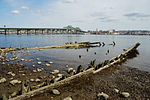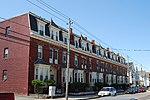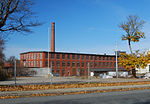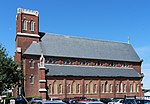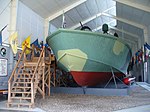Borden Flats Light
1881 establishments in MassachusettsBuildings and structures in Fall River, MassachusettsLighthouses completed in 1881Lighthouses in Bristol County, MassachusettsLighthouses on the National Register of Historic Places in Massachusetts ... and 1 more
National Register of Historic Places in Fall River, Massachusetts

Borden Flats Light is a historic lighthouse on the Taunton River in Fall River, Massachusetts, US. It is a tower-on-caisson type known as a sparkplug lighthouse. The light was built in 1881, and added to the National Register of Historic Places as Borden Flats Light Station on June 15, 1987, reference number 87001528.
Excerpt from the Wikipedia article Borden Flats Light (License: CC BY-SA 3.0, Authors, Images).Borden Flats Light
Almond Street, Fall River
Geographical coordinates (GPS) Address External links Nearby Places Show on map
Geographical coordinates (GPS)
| Latitude | Longitude |
|---|---|
| N 41.704718333333 ° | E -71.174395833333 ° |
Address
Borden Flats Light
Almond Street
02724 Fall River
Massachusetts, United States
Open on Google Maps
